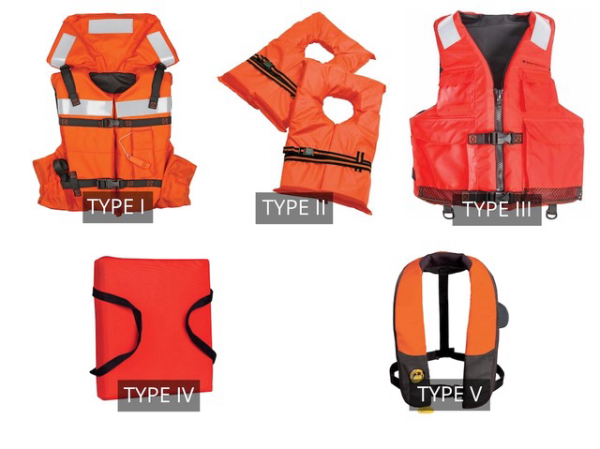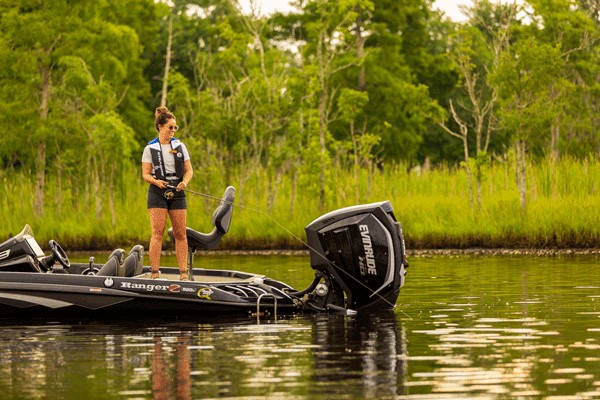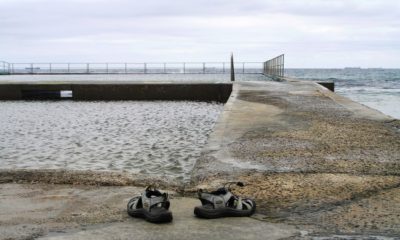Sports
How to Not Die in the Open Water
There were 767 boating deaths in 2020. Almost all of them could have been avoided.
Today, we have a guest column courtesy of Fishing Wire editor Frank Sergeant with some simple tips that just might save your life.
______________________________________________________
Designated national weeks are generally a bore that fall into the Internet noise category for most of us. However, this is National Safe Boating Week, and since the mistakes you make on the water can literally mean life and death, perhaps we should take a moment to review.
In 2020, the most recent year for which statistics have been completed, 5,265 accidents were reported to the U.S. Coast Guard.
There were 767 boating deaths, 3,191 injuries and approximately $62.5 million dollars of damage to property.
The fatality rate was 6.5 deaths per 100,000 registered recreational vessels. This is a 25% increase from the 2019 fatality rate of 5.2 deaths per 100,000 registered recreational vessels, according to the report. The number of injuries was also up nearly 25 percent.
About 75% of fatal boating accident victims drowned, and 86 percent of them were not wearing a life jacket.

Small boats are most likely to be involved in accidents: 80 percent of the drowning were from boats under 21 feet long, though that’s probably because there are far more boats of that size than there are larger ones, to say nothing of the smaller craft being less seaworthy.
And as always, alcohol is a leading contributor to the fatalities—it was a factor in 18 percent of the 2020 boating deaths per USCG.
Collisions were the main cause of accidents, with 1379 boat-to-boat crashes and 542 with a fixed object. In addition, there were 484 reportable accidents resulting from high-speed grounding.
All of the above are the result of operator inattention and failure to keep a proper lookout, an easily avoided failing for anyone who takes the wheel.
There were 247 accidents in which a person was struck by a propeller, resulting in 39 deaths.
The likely reason is not because all of us were more careless in 2020, but simply because covid put a lot of us out of work and the government gave us money so many of us spent it on fishing and boating. More people on the water means more accidents, unfortunately.
We’re still feeling that boost as many who stopped going to the office never went back—remote work is booming. Of course, if you’re an electrician or a plumber, that’s not a very effective way to conduct business, but those who can are staying home—and presumably enjoying more leisure time, rather than sitting in boring meetings that have no relevance to their particular job.
If you want to see a full breakdown of the Coast Guard’s annual recreational boating report, you can look at it here: https://uscgboating.org/library/accident-statistics/Recreational-Boating-Statistics-2020-Revised.pdf .
Looking at accident statistics is always a downer, but seeing what brought others to woe can be instructive.
The obvious take-aways from the USCG report are, first to always maintain a watch not only ahead but at 360 degrees around the boat. It may seem that since there are no roads on the water you can pretty much run where ever you want to, but particularly now with the waters busier than ever before, it’s essential to remember it’s just as necessary to keep alert at the wheel on the water as on the highway.
At night, the only way you know another boat is there is by seeing its running lights—know what they mean!
And unmarked hazards can make it even more so—a floating log or a rock just below the surface can mean big trouble, especially in a small boat.
It’s also important to know the basic rules of the road if you boat anywhere there are channel markers. The basic rule in most areas is “red, right, returning” which means you keep the red markers on your right as you return to the docks, the green markers on your left, and vice versa on heading out.
Many boats now have GPS on the console, which can show you the route ahead and mark your track—it’s a huge plus for knowing where you are on the water.
But don’t get so engrossed in watching the screen that you forget to keep eyes ahead, as well—other boats do not show up onscreen unless you have radar, which most small boats don’t.
Needless to say—or not—getting engrossed in your phone while you’re underway is a really good way to become a Coast Guard statistic, as well.
And always remember that boats coming from the right or starboard have the right of way, so you slow and let them pass in front of you. And also remember that a lot of weekend skippers don’t know this, so you may have to slow and let boats coming from the left or port side pass in front of you, as well—the big thing is not to enforce your rights, but to avoid by a broad margin any chance of collision.
There are a lot of other basics to safe boating, readily available online from the various states—see a complete list at BoatUS here: https://www.boatus.org/free.
-

 Hunting2 months ago
Hunting2 months agoDrain the Swamp: Corruption Scandal at Washington State’s Fish & Wildlife
-

 Adventure4 weeks ago
Adventure4 weeks agoDoes the “Big Beautiful Bill” Have a Public-Lands Wart?
-

 Adventure1 month ago
Adventure1 month agoHowling in Cuckoo: How Mexican Wolves are Fostered
-

 Gear2 weeks ago
Gear2 weeks agoLet Freedom RING! Primary Arms’ Independence Day Category Sale Starts NOW
-

 Adventure1 week ago
Adventure1 week agoREACTION: Trump’s Make America Beautiful Again Agenda
-

 Adventure3 weeks ago
Adventure3 weeks agoU.S. Bighorn Sheep Going Home to Canada
-

 Adventure1 month ago
Adventure1 month agoYour Dream Hunt Could Be a Movie & Leupold Can Help







